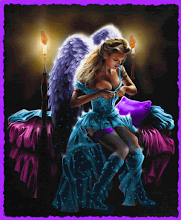The Shrinking Universe: A pride well deserved

The HinduStanding tall to be counted.... Photo: S.Subramanium
A different sexual orientation is not a sign of mental illness and the Rainbow Pride Parade is a way for the LGBT community to show that they are what they are ...
You may or may not be aware that a significant, though not-very-well-publicised event is slated to take place later today in Chennai and over the next few months in other cities in the country. For the third year in succession, persons belonging to the LGBT (for the uninitiated, Lesbians, Gays, Bisexuals and Transgendered) community are expected to be joined by ‘straight' supporters at Chennai's annual Rainbow Pride Parade, an occasion not only for members of the community to establish their solidarity with each other, but also one that showcases their pride in being who they are. The first Gay Pride Parade in India kicked off in Kolkata in 2003. It took the rest of the country a few years to get galvanised. But, since 2008, similar events have taken place, in Delhi, Mumbai, Bengaluru, Indore, Puducherry, Chennai, Thrissur and Bhubaneshwar. No doubt, in the years to come, many more Indian cities will see their own versions of Gay Pride or Rainbow Pride events. Although not all of them may take place in June for one reason or another, hopefully, June will come to be known not just for the onset of the southwest monsoon, but as the month of Pride.
Watershed event
Gay Pride Parades are organised in many parts of the world in June as upbeat events where celebrities — both gay and straight — often join in the celebrations (earlier this month, Lady Gaga performed in the Euro Gay Pride Parade in Rome). But June has unpleasant memories for gay people. On June 28, 1969, the New York City Police Department, perhaps in an expression of the widely prevalent homophobia of the times, conducted a raid at the Stonewall Inn in Greenwich Village, New York city, one of the few establishments that welcomed members of the LGBT community at the time. Such police raids were routine in 1960s America but, for some reason, this particular raid seemed to be the last straw for the long-marginalised community. The ensuing riot at the Stonewall Inn ignited a series of riots all over the city and the hitherto unorganised community soon realised that the only way they could claim their rights was to come together and assert with pride, their identity as a group.
The Stonewall Riots, as they have come to be known, are watershed events in the history of the gay rights movements and the following years saw the origins of the gay pride parades, initially in the United States and, progressively, the rest of the world. Typically, pride parades aren't classical protest movements but more an assertion of LGBT identity and an expression of the community's solidarity. Although most pride parades do carry a few protest banners — against Section 377 of the Indian Penal Code or list demands like the right of transgendered people to be recognised as an independent gender — the essential messages that the pride parades want to send out to onlookers are “we are proud of being who we are; accept us as who we are; we are normal”.
Unfortunately, ours, like many other countries, is predominantly homophobic. Many of us find it difficult to get our heads around the fact that members of the LGBT community are as normal as straight people. Look at it this way: Some people are dark-skinned; others are light-skinned. Likewise, some people are straight; others are gay. Simplistic as it may sound, this is pretty much it. Sadly, just as dark-skinned people are compelled to unsuccessfully spend fortunes daubing themselves with hefty quantities of fairness creams, people belonging to the LGBT community are expected to engage in expensive and sometimes degradingly painful procedures that claim to magically ‘convert' them into becoming marriageably straight. There are a variety of such claims available in the market today, ranging from pills and potions to yoga and ‘conversion or reparative therapies' practised by some mental health professionals. Take it from me. These cannot work. Homosexuality cannot be cured. Simply because it's not an illness.
It took the American Psychiatric Association some time to realise this for, even in the 1970s, they classified “ego-dystonic homosexuality” (when the person engaging in homosexual behaviour is confused and, indeed, deeply distressed about it) as a mental disorder. They got it right in the 1980s when they declassified homosexuality as a mental disorder. In fact, the American Psychiatric Association has gone on record to state that ‘reparative therapies' for homosexuality are actually unethical. Our powers-that-be are also beginning to get it right, as when the Delhi High Court decriminalised homosexuality in its landmark judgement of July 2009. Baby steps, but important ones.
Some good news
Having worked with a fair number of lesbians and gay people in psychotherapy, I know that the only mental health problems they face are the homophobic social consequences of their sexual orientation; the humiliating marginalisation, the social pressure to go in for straight marriages, the dearth of readily available resources that can help them respond to their inner dictates and the fear of “coming out of the closet”. However, the good news is that many members of the LGBT community have endured all of this and are willing, on behalf of the more reticent members of their fraternity, to stand tall and be counted. Whatever pride the community experiences in the process, is more than well deserved.
Email the writer at vijay.nagaswami@gmail.com

No comments:
Post a Comment